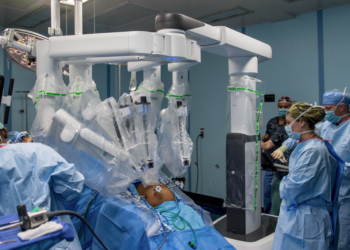As Microsoft prepares to stop offering feature updates for Windows 10 this October, millions of users are facing a crucial choice about their computers. Upgrade to Windows 11, extend Windows 10 support for a year, or take a completely different route by switching to a new operating system. A growing number are exploring Linux as a viable alternative, with options like Fedora and Zorin OS gaining attention.
Zorin OS 18 Beta Offers a Friendly Exit from Windows
Zorin OS has released its 18 Beta version, targeting users looking for a smooth transition from Windows. The operating system is designed to feel familiar for Windows users while providing a modern, open-source experience. According to the Zorin Team, over 240 million computers may not meet Windows 11’s hardware requirements, leaving many users searching for alternatives.
The new beta version comes with features that aim to reduce friction for Windows switchers. Users can access their OneDrive files directly, ensuring that important documents, photos, and work remain intact. Additionally, the OS includes a database of Windows installers and tips for running or replacing them in Linux. This combination of familiarity and guidance makes it easier for those hesitant about leaving Microsoft’s ecosystem.

Why Linux Is Becoming a Popular Choice
Linux distributions are known for their stability, security, and flexibility. Unlike Windows, most Linux distributions are free to download and install, which appeals to users with older computers or those unwilling to invest in new hardware. Fedora KDE, Ubuntu, and Zorin OS are among the most recommended for users transitioning from Windows.
For those unwilling or unable to upgrade to Windows 11, Linux offers a way to continue using their current hardware effectively. Many communities and developers are now actively creating guides, tutorials, and software tools that ease the transition for Windows users.
What Zorin OS 18 Brings to the Table
The Zorin OS 18 Beta focuses on user-friendliness, including a familiar desktop layout and system behaviors similar to Windows. Users will feel right at home with the start menu, taskbar, and window management. The system also provides suggestions for open-source alternatives to commonly used Windows software, making the switch less intimidating.
Some highlights include:
-
Seamless OneDrive integration for file access and storage
-
Compatibility tips for Windows installers to help run or replace software
-
Customizable interface that mimics Windows 10 look and feel
The goal is simple: make switching to Linux less daunting while unlocking the full potential of older computers. This approach is particularly appealing for users who are still adjusting to the open-source ecosystem.
The Broader Linux Movement
Linux adoption is rising as Windows 10 reaches its end of life. Tech communities are emphasizing the freedom and longevity Linux provides. Users no longer have to worry about forced updates, hardware requirements, or unsupported software.
Some Linux distributions now specifically market themselves to former Windows users. Zorin OS 18 is just one example, but other distributions like Ubuntu and Linux Mint also focus on accessibility and ease of transition. Communities offer extensive support, forums, and step-by-step guides to make newcomers feel welcome.
| Linux Distribution | Key Feature for Windows Users | Ease of Transition |
|---|---|---|
| Zorin OS 18 Beta | Windows-like interface, OneDrive support | High |
| Fedora KDE | Modern UI, strong community support | Medium |
| Ubuntu | Large software library, beginner-friendly | Medium |
| Linux Mint | Familiar desktop, stable updates | High |
This variety ensures users have options tailored to their needs, whether they prioritize performance, familiarity, or software compatibility.
Making the Switch
For users considering the move, the first step is trying out the Linux distribution of choice via a live USB. This allows users to test the system without committing to a full installation. Backup of important data is essential, and users can also explore virtual machines to experiment before making a permanent switch.
The transition may require patience, but Linux now offers more support and smoother integration for former Windows users than ever before. Many find that once they adjust, the speed, customization, and security benefits of Linux outweigh the initial learning curve.
As Windows 10 support ends, more users are expected to explore these alternatives. For anyone hesitant about upgrading to Windows 11 or buying new hardware, Linux is becoming a compelling option.
The question now is whether millions of Windows users will embrace this change and give Linux a serious try. What do you think about moving from Windows 10 to Linux? Share your thoughts and experiences with friends and colleagues as the October deadline approaches.
































